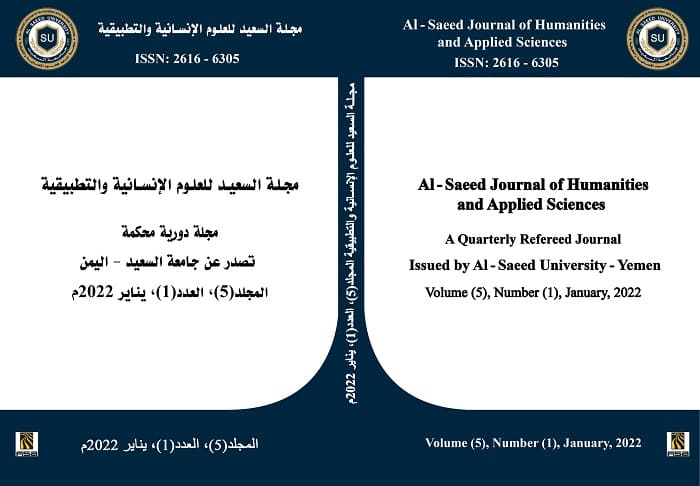A study about Forgotten pages of the struggles of the sons of Al-Maqatara
DOI:
https://doi.org/10.59325/sjhas.v5i1.88Keywords:
منسية نضالات والحواشب Forgotten -struggles -al-HawashibAbstract
At the time when the territories of the Sanjak (district) of Taiz fell to the forces of Imam Yahya Hamid al-Din (1869-1948) successively, al-Maqatrah and its fortified fortress resisted that incursion and recorded shining pages of struggle without compromise. Hence the researcher devoted his efforts to reveal that struggle, in an intense and succinct narrative style, relying on dozens of references that documented the history of that era, besides the testimonies of the descendants of some of those who lived through it.
The researcher began his study by reviewing the introductions that paved the way for the uprising of the sons of al-Maqatirah, and others, disseminating the details of their legendary steadfastness, how they preyed on the rugged terrain of their country in resisting the Imami forces. Furthermore, the researcher unfurls how the revolutionaries withstood for two years in the face of those forces supported by cannons, how the betrayal of a cleric caused their defeat and how some of them preferred death to captivity and how 250 of them were taken to Sana’a on a humiliating journey that lasted an entire month carrying the heads of their dead.
Since al-Qubeita is next to al-Maqatirah and their history is common, the researcher also referred to forgotten pages of the history of that region and reviewed the diaries of its sons’ resistance to the Imami forces that invaded their country after the fall of al-Maqatirah Castle. Furthermore, the researcher studied how the sons of al-Sabiha and al-Hawashib stood next to the above-mentioned families, how the Imamis practised heinous war crimes in those regions and how the British planes stopped this forward advance towards the south.
The researcher also revealed that the resistance of the sons of al-Maqatira to the Imamate presence did not stop at the borders of the aforementioned uprising, as the injustice practised by the Imamis against them led to the emergence of the personality of Hamid al-Din al-Khaznar among their ranks, the returning Sufi jurist, who stood in the face of that injustice and exposed it objectively and lost his life for his ultimate goals.
The researcher concluded his study by reviewing important pages from the history of Taiz’s struggle, which was nothing more than an extension of the al-Maqatirah uprising, albeit in a different way. The knot of guilt dominated several sheikhs who contributed - directly or indirectly - to quelling that uprising. Therefore, they began to think seriously about the independence of the governorate (district) of Taiz and the governorate (district) of Ibb. Hence, they established the first entity opposed to the rule of the Imamate which they called The Association of Sheikhs, but their matter was exposed early and they paid the price for that with their lives.
Downloads
Published
How to Cite
Issue
Section
License
copyright is retained by the authors. Articles are licensed under an open access Creative Commons CC BY 4.0 license, meaning that anyone may download and read the paper for free. In addition, the article may be reused and quoted provided that the original published version is cited. These conditions allow for maximum use and exposure of the work.



